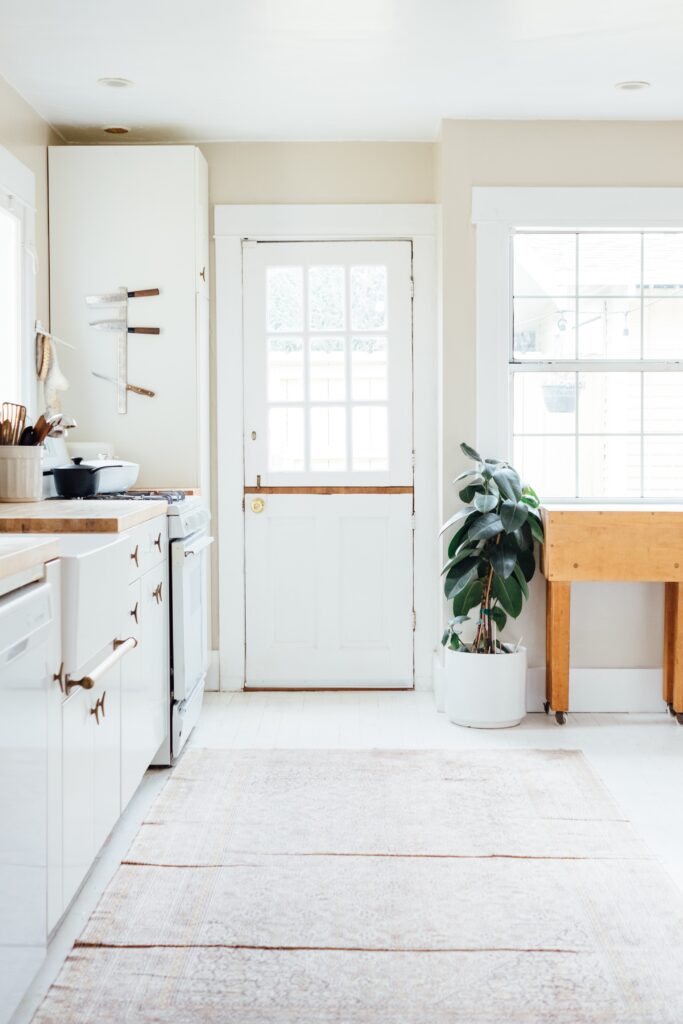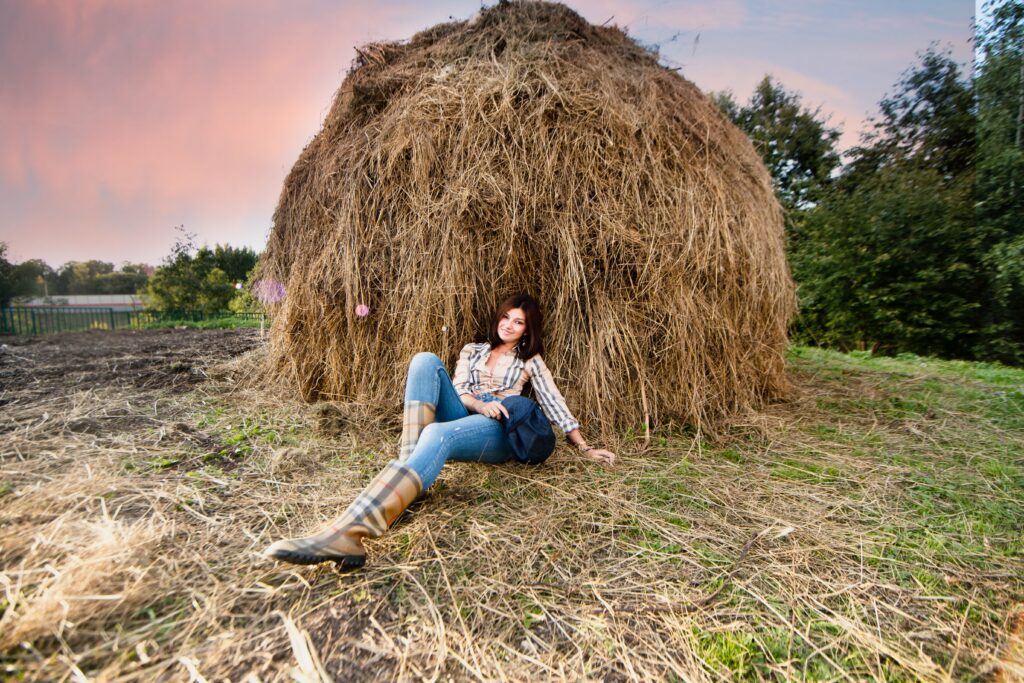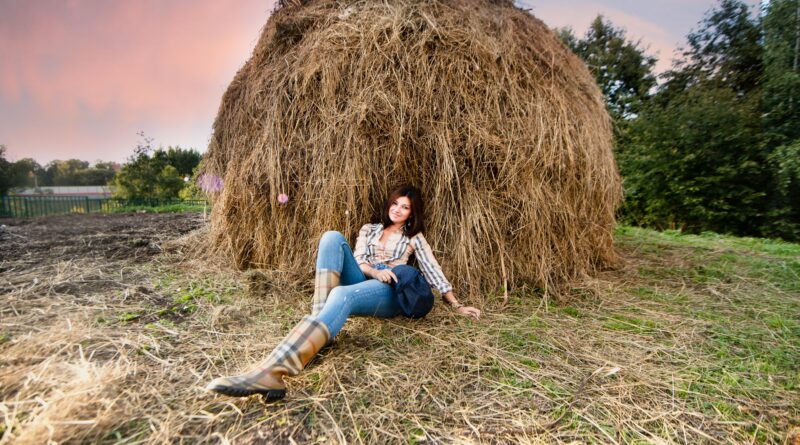Toddler-Proofing Your Home: Essential Safety Measures For Curious Explorers
Is your curious little explorer starting to crawl or walk? It’s an exciting milestone, but it also means it’s time to start toddler-proofing your home. As your little one’s curiosity grows, so does the need to ensure their safety. From securing furniture and cabinets to covering electrical outlets, this article will guide you through the essential safety measures to create a safe and secure environment for your toddler. So let’s get started on creating a space where your little adventurer can explore with peace of mind.
1. Babyproofing Basics
1.1 Identify Potential Hazards
When it comes to babyproofing your home, the first step is to identify potential hazards that could pose a risk to your little one. Take a thorough look around your house and think like a curious toddler. Are there any sharp edges or corners that they could bump into? Are there any small objects that they could put in their mouth? Are there any electrical outlets within their reach? By being aware of these potential hazards, you can then take the necessary steps to mitigate them and create a safe environment for your child.
1.2 Install Safety Gates
One of the most effective ways to keep your little explorer safe is by installing safety gates. These gates are designed to prevent access to areas that may pose a danger, such as staircases or rooms with hazards. It’s important to choose safety gates that are sturdy and securely mounted. Make sure to measure the width of the doorways or staircases before purchasing a safety gate to ensure a proper fit.
1.3 Secure Electrical Outlets
Electrical outlets can be a major concern when it comes to child safety. As curious little ones love to explore, they may be tempted to stick their fingers or objects into outlets, which can lead to serious injury. To prevent this, invest in outlet covers or plug guards to block access to electrical outlets. This simple step can go a long way in ensuring the safety of your child.
1.4 Keep Sharp Objects Out of Reach
Sharp objects such as knives, scissors, or even broken glass should always be kept out of reach of children. Store them in locked drawers or cabinets, or consider using childproof locks to prevent access. It’s also essential to be mindful of any sharp edges or corners on furniture or fixtures in your home. Consider using corner guards or covers to minimize the risk of injury.
1.5 Lock Cabinets and Drawers
Cabinets and drawers can have a world of wonders for curious toddlers. Unfortunately, they can also contain potential hazards such as cleaning products, medications, or small objects that pose a choking hazard. To protect your child, install childproof locks on cabinets and drawers in the kitchen, bathroom, and any other areas where hazardous materials are stored. This simple step can prevent accidents and give you peace of mind.
2. Securing Furniture and Appliances
2.1 Anchor Heavy Furniture
Toddlers are known for their curiosity and climbing abilities. This can become dangerous when it comes to heavy furniture such as dressers, bookshelves, or entertainment centers. These pieces of furniture can easily tip over if a child climbs on them, potentially causing serious injuries. To prevent such accidents, anchor heavy furniture to the wall using brackets or straps. This will ensure that even if your child tries to climb, the furniture remains securely in place.
2.2 Secure TVs and Electronics
Flat-screen TVs and electronics can be particularly tempting for little ones, and they can easily tip over if pulled or climbed on. To prevent this, make sure to secure your TV and other electronics to the wall or the stand using straps or brackets specifically designed for this purpose. By doing so, you’ll eliminate the risk of these items toppling over and potentially causing harm to your child.
2.3 Strap Down Appliances
Appliances such as stoves, ovens, and dishwashers can be hazardous if not properly secured. Toddlers may try to climb or open these appliances, which can lead to burns, cuts, or other injuries. Be sure to use appliance straps to secure them to the wall or the floor, preventing them from tipping or falling. Additionally, always keep appliance doors closed and locked when not in use to minimize the risk of accidents.
2.4 Lock Up Hazardous Liquids
Many household cleaners, chemicals, and other hazardous liquids are stored under sinks and in cabinets. These substances can be extremely dangerous if ingested or spilled by a curious toddler. To keep your child safe, use childproof locks on cabinets containing these substances. Consider relocating hazardous liquids to higher cabinets that are completely out of your child’s reach.
2.5 Stabilize Bookshelves and Cabinets
Bookshelves and cabinets can be a significant hazard if they are not properly secured. Children often enjoy pulling on shelves or climbing on them, which can result in the entire piece of furniture toppling over. To prevent accidents, secure bookshelves and cabinets to the wall using L-brackets or furniture straps. The stability provided by these measures will greatly reduce the risk of furniture tipping over and causing harm.

3. Creating Safe Play Areas
3.1 Baby-Proofing the Nursery
The nursery is where your baby will spend a significant amount of time, so it’s essential to create a safe and comfortable environment. Begin by ensuring that the crib meets current safety standards, with slats that are the appropriate distance apart and a mattress that fits snugly. Keep soft toys and other loose bedding out of the crib to reduce the risk of suffocation. Use cordless window coverings to prevent the risk of strangulation. Additionally, secure any furniture such as changing tables or bookshelves to the wall to prevent tipping.
3.2 Making the Living Room Safe
The living room is often the heart of the home, and it’s where your child is likely to spend a lot of their time playing and exploring. Begin by removing any small objects or choking hazards, such as coins, batteries, or buttons, from the floor and low-lying surfaces. Ensure that any heavy furniture or electronics are properly secured to prevent tipping. Consider using corner guards to protect your child from sharp edges or corners. Place safety gates in doorways or entryways to keep your child within a safe play area.
3.3 Outdoor Play Safety Measures
Outdoor play is essential for a child’s development, but it’s crucial to create a safe play environment. Inspect your outdoor space for potential hazards such as sharp edges or objects, poisonous plants, or unfenced areas near roads or bodies of water. Ensure that any playground equipment is age-appropriate and well-maintained. Consider installing childproof locks on gates to prevent your child from accessing areas that may pose a danger.
3.4 Ensuring Bathroom Safety
Bathrooms can present unique safety challenges for young children. Start by installing a toilet lock or lid lock to prevent your child from accessing the toilet bowl, which can be a drowning hazard. Adjust the water heater temperature to ensure that the water doesn’t get too hot and scald your child. Keep all medications, cleaning products, and other hazardous substances locked away in cabinets, out of your child’s reach. Place nonslip mats or decals in the bathtub to prevent slipping accidents.
3.5 Childproofing the Kitchen
The kitchen is full of potential hazards, from hot stovetops and sharp utensils to chemicals and choking hazards. Install stove knob covers to prevent your child from accidentally turning on the burners. Place childproof locks on cabinets and drawers that contain cleaning products or sharp objects. Keep small appliances, such as blenders or toasters, pushed back against the wall to prevent your child from pulling them down. Remember to never leave your child unattended in the kitchen, especially when cooking.
4. Preventing Falls and Injuries
4.1 Installing Safety Gates at Staircases
Staircases can be a significant fall hazard for toddlers, especially when they are just learning to climb and crawl. Install safety gates at the top and bottom of staircases to prevent your child from accessing them unsupervised. Look for gates that are designed specifically for staircases and ensure they are securely mounted to the wall or banister for maximum stability.
4.2 Securing Windows and Balconies
Windows and balconies can pose a serious risk for falls and injuries if not properly secured. Ensure that windows have functional locks or restrictors to prevent your child from opening them wide enough to climb out. Consider installing window guards or safety netting on windows located above the ground floor. For balconies, make sure there are no gaps that your child could slip through and consider installing childproof locks on balcony doors.
4.3 Softening Potential Impact
Even in childproofed areas, accidents can still happen, and it’s important to minimize the impact of any falls or bumps. Use soft cushioning or padding on sharp edges or corners of furniture to prevent injuries. Place rugs or nonslip mats on floors to reduce the risk of slipping. In areas where falls are more likely, such as near the crib or changing table, consider using padded flooring or mats.
4.4 Removing Tripping Hazards
Tripping hazards can be dangerous for both children and adults. Keep your home clear of clutter, ensuring that toys, shoes, and other items are properly stored away when not in use. Secure loose cords or wires along baseboards or use cord covers to prevent your child from tripping or pulling on them. Additionally, be mindful of any loose rugs or damaged flooring that may pose a tripping hazard and make necessary repairs or adjustments.
4.5 Padding Corners and Edges
Corners and edges of furniture, countertops, and other fixtures can be potential areas of injury if a child were to accidentally bump into them. Using corner guards or edge protectors can help soften the impact and reduce the risk of cuts or bruises. These simple and affordable solutions can make a significant difference in creating a safer environment for your child.

5. Electrical and Fire Safety
5.1 Covering Electrical Outlets
Electrical outlets are not only potential sources of danger but can also be intriguing for curious toddlers. To keep your child safe, use outlet covers or plug guards to prevent access to electrical outlets. Make sure the covers are difficult for a child to remove and that they fully cover the outlet when not in use.
5.2 Managing Cords and Wires
Tangled cords and wires can pose tripping hazards and also create the risk of electrical accidents if pulled or chewed on by a child. Keep cords organized and out of reach by using cord organizers, cable clips, or cord concealers. This will not only help prevent accidents but will also keep your home more tidy and organized.
5.3 Childproofing Power Strips
Power strips are often found in households with multiple electronics and can be a safety concern if not properly managed. To prevent your child from accidentally unplugging cords or playing with the outlets, invest in childproof power strip covers. These covers enclose the power strip, preventing access while still allowing you to use the outlets.
5.4 Installing Fire Alarms
Fire safety is of utmost importance in any home, especially when you have a child. Install smoke alarms in every bedroom, outside sleeping areas, and on every level of your home. Test them regularly to ensure they are functioning properly, and replace batteries as needed. Having a working smoke alarm is an essential tool in alerting you to potential fire hazards and giving you the time to evacuate safely.
5.5 Educating About Fire Safety
In addition to having smoke alarms, it’s crucial to educate your child about fire safety. Teach them about the dangers of playing with matches or lighters and emphasize the importance of staying away from fireplaces, candles, and stovetops. Create a fire escape plan with your family and practice it regularly so that everyone knows what to do in case of an emergency.
6. Childproofing Doors and Windows
6.1 Secure Doors with Childproofing Locks
Doors can be fascinating for curious toddlers, and they may attempt to open them and wander into potentially dangerous areas. Install childproof locks or doorknob covers to prevent your child from easily opening doors. This will help keep them in safe areas and prevent them from accessing spaces like bathrooms, garages, or other rooms with potential hazards.
6.2 Using Door Knob Covers
If you have round, lever-style doorknobs, door knob covers can be an effective way to prevent your child from opening them. These covers are designed to make it difficult for small hands to grip and turn the doorknob, keeping them safely inside designated areas. Install door knob covers on both interior and exterior doors to maintain a secure environment.
6.3 Installing Window Guards
Windows can be a significant hazard for curious children, particularly if they are located on higher floors. Window guards or safety netting are specifically designed to prevent children from opening windows wide enough to climb out. Install window guards on any windows that are accessible to your child and make sure they are properly secured to the frame.
6.4 Window Cord Safety
Window cords can pose a serious risk of strangulation if not properly managed. Ensure that all window cords are kept out of your child’s reach by using cord cleats or cord wraps to secure them and prevent tangling. Alternatively, consider replacing corded window coverings with cordless options to eliminate the risk altogether.
6.5 Keeping Window Blind Cords Out of Reach
Window blind cords can also be a strangulation hazard for young children. To prevent accidents, make sure that all window blind cords are safely secured and out of your child’s reach. Keep cribs, beds, and other furniture away from windows to prevent your child from accessing the cords. Consider replacing corded blinds with cordless options for added safety.

7. Managing Potential Choking Hazards
7.1 Identify Common Choking Hazards
Choking is a leading cause of injury and death in young children, so it’s crucial to be aware of common choking hazards. Small objects such as coins, buttons, or small toy parts can easily be swallowed by a child and cause an obstruction. Foods such as grapes, nuts, and hot dogs can also pose a choking risk. Take the time to educate yourself and your family members about the potential risks and be vigilant about keeping these hazards out of your child’s reach.
7.2 Keep Small Objects Out of Reach
To minimize the risk of choking, be diligent about keeping small objects out of your child’s reach. Regularly inspect the floor and low-lying surfaces for any small items that could be a potential hazard. Be mindful of older siblings’ toys or small household items that could inadvertently find their way into your toddler’s hands. By keeping a clutter-free environment and ensuring that small objects are safely stored away, you can greatly reduce the risk of choking accidents.
7.3 Monitor Children During Meals
Mealtime can be a high-risk period for choking, as young children may not have developed the necessary motor skills to chew and swallow their food properly. Always supervise your child during meals, ensuring that they are sitting upright and eating slowly and carefully. Encourage them to take small bites and chew thoroughly before swallowing. Avoid distractions such as screens or toys during meals, as this can increase the risk of choking.
7.4 Baby-Proofing Mealtime
When it comes to baby-proofing mealtime, there are several steps you can take to minimize the risk of choking. Cut food into small, bite-sized pieces that are easy for your child to manage. Avoid giving them hard, round foods such as whole grapes or popcorn. Be cautious with foods that have a high choking risk, such as nut butters or chunks of meat. Finally, encourage your child to eat at a slow pace and avoid rushing them through their meals.
7.5 Educate Caregivers on Choking Prevention
It’s important to educate anyone who cares for your child, such as grandparents, babysitters, or daycare providers, about the risks of choking and how to prevent it. Share information about common choking hazards and emphasize the importance of vigilant supervision during meals and playtime. Make sure that everyone knows the appropriate response in the event of a choking emergency and is trained in basic first aid techniques such as infant CPR.
8. Poison Prevention and Storage Safety
8.1 Storing Medications Properly
Medications can be extremely dangerous if ingested by a child, so it’s crucial to store them properly. Keep all medications, both prescription and over-the-counter, in a locked cabinet or drawer that is out of your child’s reach. Be especially cautious with vitamins or other supplements that may resemble candy. Always double-check that all medication caps are securely closed and consider using child-resistant containers for an added layer of safety.
8.2 Childproofing Household Cleaners
Household cleaners and chemicals should be stored securely and out of your child’s reach. Use childproof locks on cabinets or drawers where cleaning supplies are stored. Consider relocating hazardous substances to higher cabinets or shelves. When using cleaning products, ensure that your child is in a separate area to prevent accidental exposure to fumes or liquids. Finally, always follow the manufacturer’s instructions for proper usage and storage of cleaning supplies.
8.3 Hazardous Plant Identification
While plants can add beauty to the home, some can be toxic if ingested by a child. Take the time to identify any potentially hazardous plants in and around your home and remove them or relocate them to an area that is inaccessible to your child. If you’re unsure about the toxicity of a specific plant, consult with a professional or do thorough research to ensure the safety of your child.
8.4 Poison Control Information
It’s important to have poison control information readily available in case of an emergency. Program the poison control hotline number into your phone and keep it posted in a visible location, such as on the refrigerator or near the phone. Familiarize yourself with the signs of poisoning and what steps to take in the event of accidental ingestion. Being prepared can save valuable time in case of an emergency.
8.5 Safety Measures for Garage and Garden
The garage and garden are often overlooked areas when it comes to childproofing, but they can contain numerous hazards. Ensure that all hazardous materials, such as pesticides, fertilizers, or automotive chemicals, are stored in locked cabinets or sheds that are out of your child’s reach. Keep gardening tools out of sight and locked away when not in use. If you have a pool or hot tub, take the necessary precautions to prevent access, such as a fence or pool cover, to ensure the safety of your child.
9. Creating a Child-Safe Bathroom
9.1 Childproofing the Toilet
The toilet can be a major hazard for young children, as they may be tempted to play in the water or explore its contents. Install a toilet lock or lid lock to prevent your child from opening the toilet bowl lid. This simple measure can help prevent drowning accidents and keep your child safe.
9.2 Managing Water Temperatures
Bathwater that is too hot can cause severe burns to a child’s delicate skin. Set your water heater temperature no higher than 120 degrees Fahrenheit (49 degrees Celsius) to prevent scalding injuries. Always test the water temperature before placing your child in the bath, using your wrist or elbow to ensure it is comfortably warm. Consider using a bathtub spout cover to protect against accidental bumps and provide additional padding.
9.3 Securing Cabinets and Drawers
Cabinets and drawers in the bathroom often contain hazardous substances such as cleaning products, medications, or sharp objects. Use childproof locks on cabinets and drawers to prevent your child from accessing these hazards. Ensure that all medications are securely stored in a locked container, out of your child’s reach. By securing these areas, you can create a safe and child-friendly bathroom environment.
9.4 Protecting Against Slips and Falls
The bathroom can be a slippery area, increasing the risk of falls and injuries. Use nonslip mats or decals in the bathtub or shower to provide better traction for your child. Consider installing grab bars near the toilet and in the shower or bathtub to give your child added stability and support. Regularly inspect the bathroom floor for any water leaks or spills and clean them promptly to prevent slipping accidents.
9.5 Storing Bathroom Chemicals Safely
Bathroom cleaners and chemicals should be stored securely and out of your child’s reach. Keep all cleaning supplies in locked cabinets or drawers, and consider relocating hazardous substances to higher shelves. When using cleaning products, ensure that your child is in a separate area to prevent accidental exposure to fumes or liquids. Always follow the manufacturer’s instructions for proper usage and storage of cleaning supplies.
10. Understanding Toy Safety
10.1 Age-Appropriate Toys
When choosing toys for your child, it’s important to consider their age and developmental stage. Look for toys that are labeled as age-appropriate and consider their potential hazards. Avoid toys with small parts that could be a choking hazard for your child. Additionally, ensure that toys are made of non-toxic materials and have been tested for safety standards by reputable organizations.
10.2 Checking for Safety Labels
Before purchasing a toy, always check for safety labels and certifications. Look for labels such as the ASTM International (American Society for Testing and Materials) symbol, which indicates that the toy meets specific safety standards. Avoid toys with missing or illegible labels, as this may indicate that the toy has not been properly tested or reviewed for safety.
10.3 Inspecting Toys Regularly
Regularly inspect your child’s toys for any signs of wear or damage that could pose a safety risk. Check for loose parts, sharp edges, or small pieces that may have become detached. Repair or discard any toys that are no longer in safe condition. It’s also important to periodically review and remove toys that are no longer age-appropriate for your child.
10.4 Storing and Cleaning Toys
Ensure that toys are properly stored when not in use to prevent accidents and maintain their condition. Use toy chests or storage bins with lids that latch securely to prevent your child from accessing toys without supervision. Clean toys regularly, especially those that come into contact with your child’s mouth or have been shared with other children. Follow manufacturer guidelines for cleaning and disinfecting toys to prevent the spread of germs.
10.5 Awareness of Recalls
Stay informed about toy recalls to ensure that your child’s toys are not on any recall lists. Check manufacturers’ websites and visit consumer protection websites regularly for the latest information on product recalls. If a toy is recalled, discontinue use immediately and follow the manufacturer’s instructions for returning or disposing of the toy. Keeping up-to-date with recalls can help ensure that your child’s toys are safe and free from potential hazards.
In conclusion, toddler-proofing your home is essential to create a safe environment for your curious little explorer. By identifying potential hazards, securing furniture and appliances, creating safe play areas, preventing falls and injuries, practicing electrical and fire safety, childproofing doors and windows, managing potential choking hazards, implementing poison prevention and storage safety measures, creating a child-safe bathroom, and understanding toy safety, you can significantly reduce the risk of accidents and keep your child safe at home. Remember to stay vigilant, supervise your child, and regularly review and update your childproofing measures as your child grows and develops new skills. With these comprehensive safety measures in place, you can provide a secure and nurturing environment for your child to thrive and explore.


